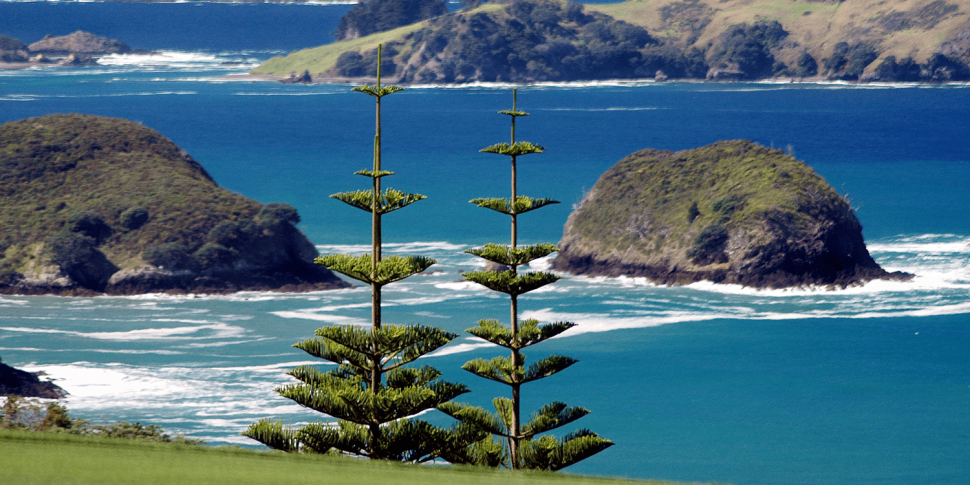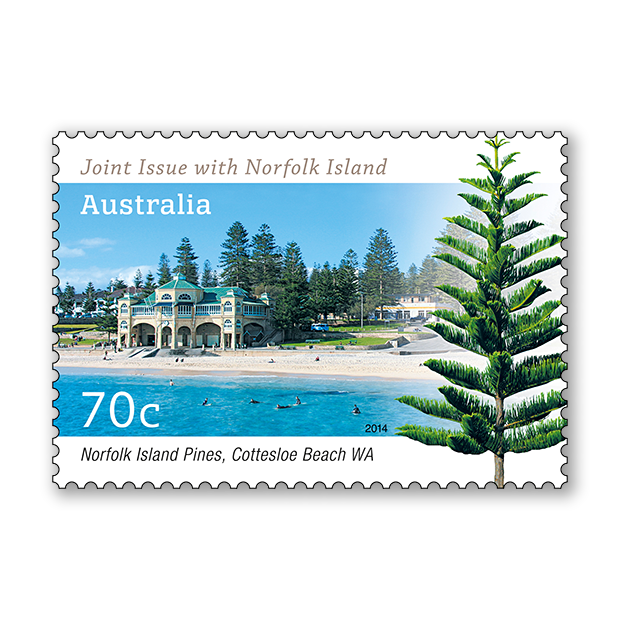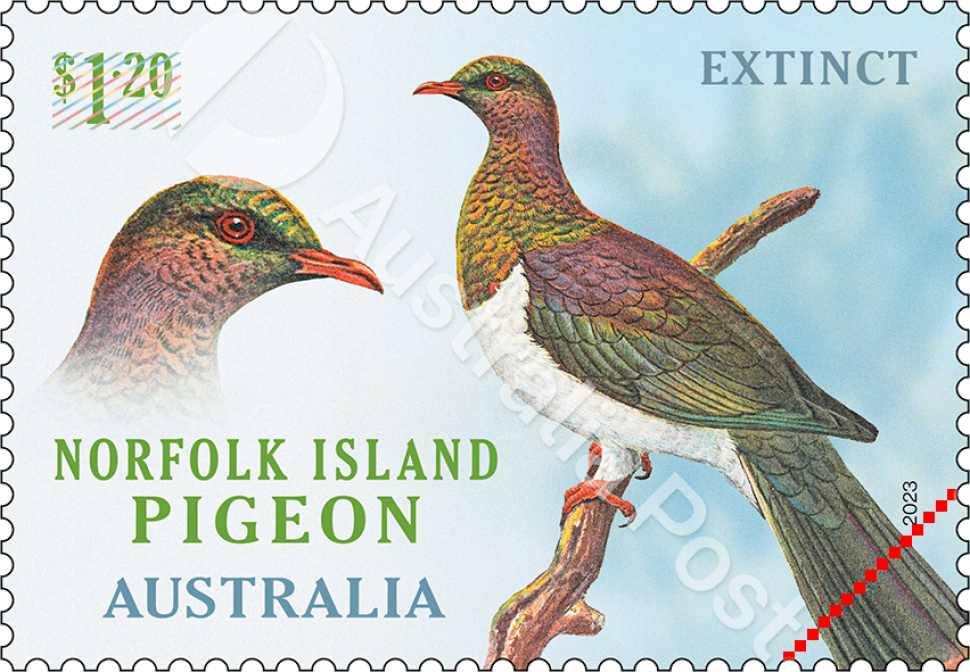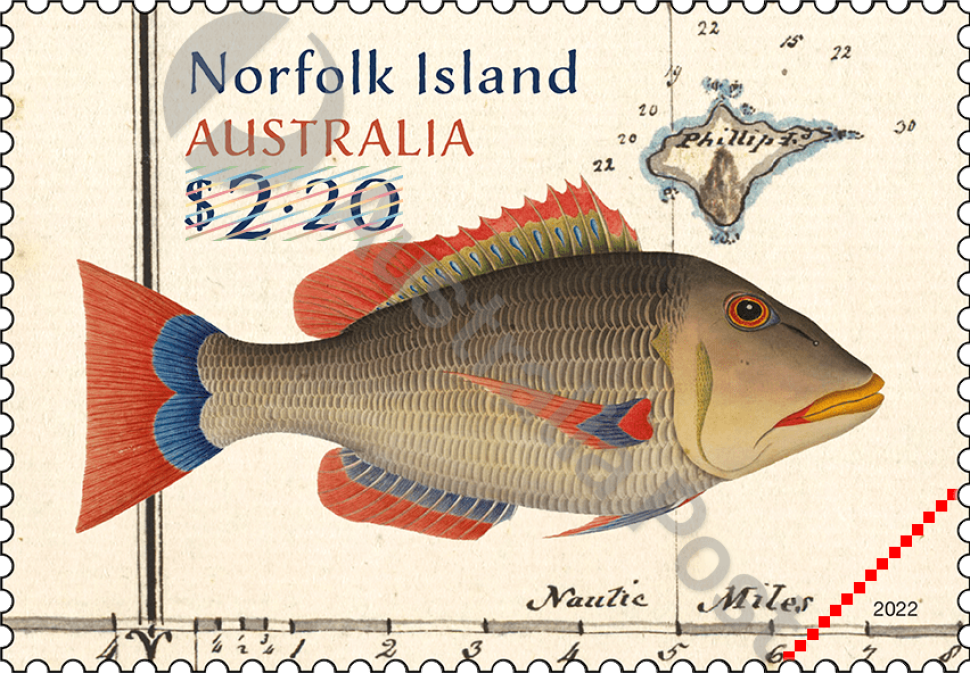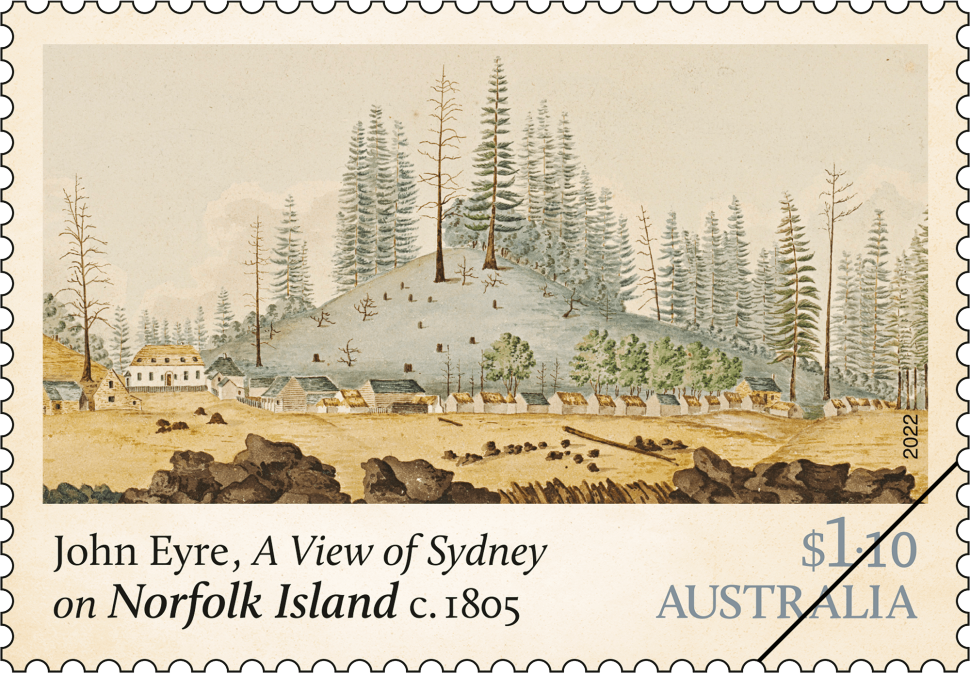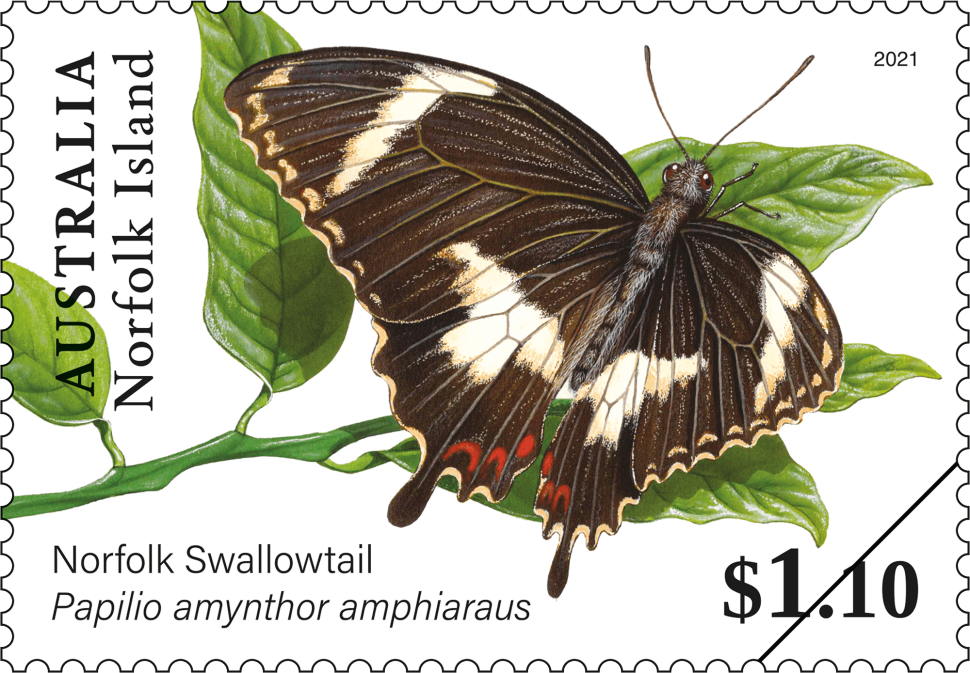Norfolk Island is a small island in the Pacific Ocean some 1,400 kilometres east of the Australian mainland. Originally settled by Polynesians, in 1788 the island was colonised by Great Britain and subsequently used as a British penal colony. In 1856 the inhabitants of the overcrowded Pitcairn Island, including many of the descendants of the original Bounty mutineers, were resettled on Norfolk Island.
In 1914 Norfolk Island was proclaimed an external territory of the Commonwealth of Australia and now enjoys a substantial degree of self-government. Since 1947 Norfolk Island has been responsible for its own postal service and postage stamps. This joint stamp issue features the endemic Norfolk Island Pine Araucaria heterophylla, a symbol of the island which is also widely grown in Australia as an ornamental tree, particularly in coastal regions.
Designer
Melinda Coombes, Coombes Whitechurch Design
Products released in this issue
- Stamps (Australia) 1 x 70c, 1 x $1.40
- Stamps (Norfolk Island) 1 x 20c, 1 x 70c
- Covers (blank pictorial, gummed and joint issue)
- Stamp pack
- Maxicard
- Gutter strips
Technical specifications
- Issue date
- 22 July 2014
- Issue withdrawal date
- 31 January 2015
- Denominations
- 1 x 70c, 1 x $1.40
- Stamp design
- Melinda Coombs, Coombs Whitechurch Design
- Product design
- Simon Sakinofsky, Australia Post Design Studio
- Paper - gummed
- Tullis Russell
- Printer - gummed
- RA Print
- Printing process
- Lithography
- Stamp size
- 37.5mm x 26mm
- Perforations
- 13.86 x 14.6
- Sheet layout
- Module of 50
- FDI postmark
- Canberra, ACT 2600
- FDI withdrawal date
- 20 August 2014
A terrestrial orchid, also called the Dancing Spider Orchid, endemic to Western Australia, where it is widespread in the south-west. The name means club-bearing and refers to the broad, flat, deeply fringed labellum. It is one of the spider orchids (genus Caladenia, so named for its spider-like petals).
It favours sedgy flats in open sandy forests of the south, particularly on the coastal planes and slopes from north of Perth to Albany and Esperance. It flowers from August to October. It is a slender hairy plant to 35 centimetres high with a long lanceolate hairy leafy. One to three flowers (20 to 30 mm in diameter) bloom on long pedicels well displayed on the erect hairy stem, and are coloured yellowish-green, red and deep purplish-red.
This content was produced at the time of the stamp issue release date and will not be updated.
